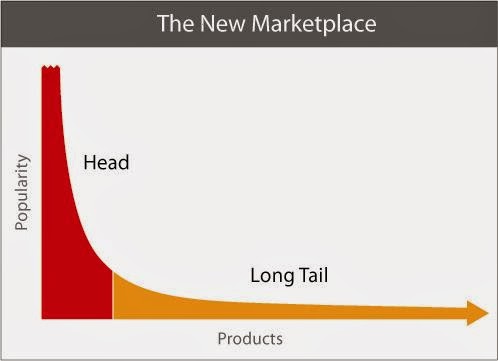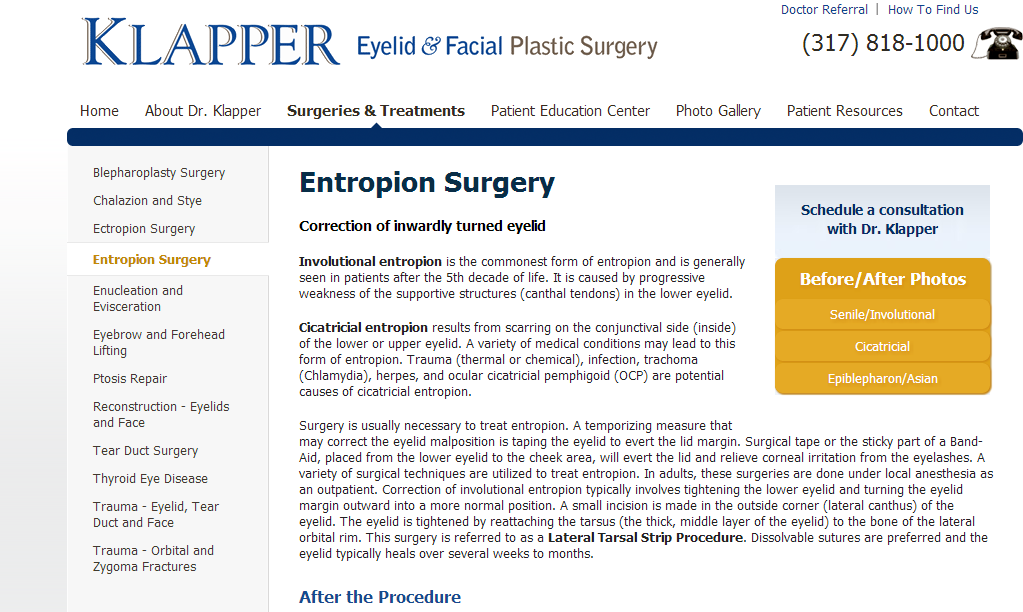Target the right audience with more specific terms.
Long-tail keywords have lower search volume and thus are easier to target and tend to be more effective when captured. For example, a search for “web design” is certainly a potential target for TBH Creative but is that a search for a web design firm? A person who wants a web design job? A designer looking for inspiration? It’s hard to tell and therefore, hits captured off that keyword target are going to offer mixed results.However, a search for “web design firm Indianapolis” is a far better prospect for us. A person searching for that long-tail term is far more likely to be looking for our services and our SEO efforts with that phrase are going to be more successful.
 |
| Illustration by Chris Anderson, The Long Tail, CC by 2.0 |
In this article summary: Articles on Longtail Keywords for SEO Strategy, Design M.ag hits on the importance of long-tail keywords: “Longtail keywords are the searches which make up over 70% of Google search terms. These are often longer than 3-4 words and they can be very specific in relation to your website. This is why most visitors who search longtail will stay on your website for a long time, if you can fill their exact need(s).” Read the full article.
Enhance your long-tail strategy with landing pages.
Once you research and develop your list of long-tail targets, step back and look at your website content. There’s a fine balance between writing content that is of genuine value to your audience while naturally incorporating your long-tail targets and writing content that is loaded with phrases and keyword terms but doesn’t offer much inherent value.Landing pages can help with this balance. As you review your website content strategy, consider developing separate pages for separate long-tail keywords. Assuming these targets are viable sources of potential leads, they are also ripe for developing into information that is useful and will best connect with your audience.
For example, Dr. Stephen Klapper is an eyelid and facial plastic surgeon in Indianapolis. As such, he offers a specific set of medical services to his audience that they search for with longer search phrases. As part of an overall content strategy, Dr. Klapper developed a set of pages to describe each of his primary surgeries and treatments.

These pages are of definite value to his potential patients as they learn more about the procedures they need. They also help Dr. Klapper most effectively capture searches for those “long-tail” terms.
We believe that a successful SEO strategy is one that seeks to grow your traffic with the right audience. Long-tail keywords are certainly part of a smart, achievable strategy. Let us help you develop a smart SEO strategy.
TBH Creative is an Indianapolis-based Internet design and strategy firm. We are focused on taking your website from design through development and into ongoing successful promotion. Learn how we can help you take your Internet marketing to the next level.
TBH Creative is an Indianapolis-based Internet design and strategy firm. We are focused on taking your website from design through development and into ongoing successful promotion. Learn how we can help you take your Internet marketing to the next level.
